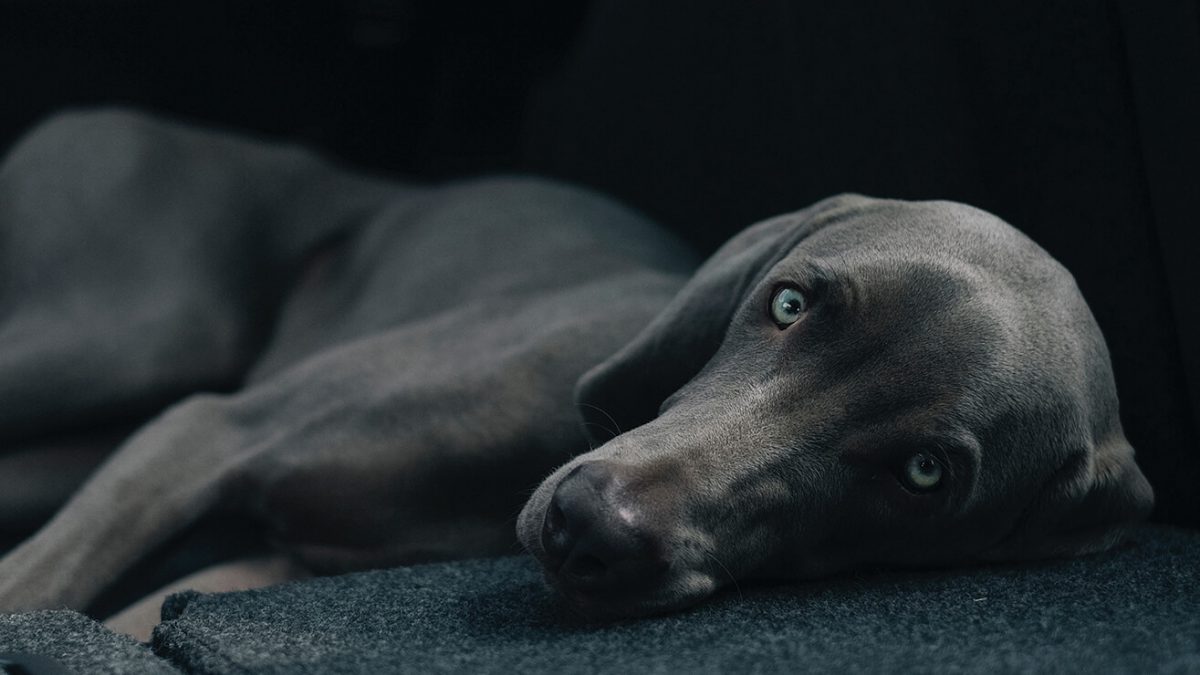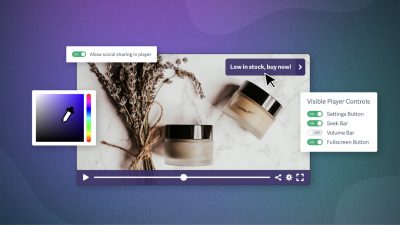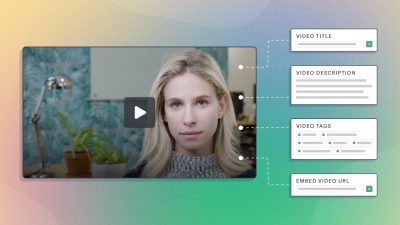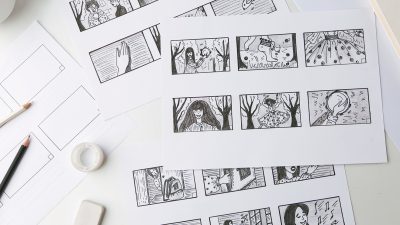First impressions are formed in just a couple seconds. If your video is poorly lit, the best interview in the world, with the most interesting person in the world, can instantly lose credibility and cause viewers to click away.
If you are just starting out with video, or don’t have an expensive light kit handy, then utilize the following steps to make your subject look their best.
1. Understanding the basics of lighting.
Three Point Lighting is the most popular lighting setup because it is relatively simple and delivers professional results. In a perfect world, we want a key light, fill light and back light.
The key light is the primary source of light on the subject. I generally like to place the key light slightly off to one side of the camera to create soft shadows on the subject’s face. If you only have one light, then you might actually want that light placed directly behind your camera, or just slightly off-center.

The fill light would then be on the opposite side of the camera from the key light. The fill light is generally 20-40% the intensity of the key light.

In lieu of a light, you can try using a white shiny board or similar softly reflective surface, such as white foam core. If using a shiny board, then place it about the same height as the person’s shoulder so the light emitted from the key light bounces off the board onto the subject’s face.

The back light is placed behind the subject. In a perfect world, I would use a c-stand to suspend the light up and over the subject, then place the light on a dimmer in order to control the intensity of the light.
In lieu of a c-stand, place the back light 180 degrees from the key light, or slightly off center from the camera. This keeps us from seeing the light stand in the camera shot, while also helping to balance the shot. The intensity should only be about 15-20% that of the key light.
A back light also helps separate the subject from the background, and subtly highlights the outline of their head. Note that if your subject has little to no hair, then you might not be able to use a back light due to light reflecting off the top of their head. Softening the light or repositioning it might get around this, but will likely impact the location of your other lights as well.

2. Your camera’s iris control is your friend.
This step is actually more important than having a good light kit. Learn how to switch your camera’s iris control between automatic and manual if that feature is available.
In automatic control, the camera looks at the entire picture and determines the iris setting. If you have any bright objects in the background, the iris is going to clamp down and the subject will appear dark or under-lit. By switching to manual control, you can overcome any bright objects in the background by opening the iris so your subject is properly exposed.
3. Location, Location, Location.
Much like real estate, location is key.
Busy backgrounds can be distracting, or even disruptive if there is a lot of commotion in the frame of your shot. Whether inside or out, take care to pick a calm, quiet spot to help ensure your shoot will go smoothly. The more control you have over your environment, the easier it will be to light it the way you want and get the shots you need.
Here are some common mistakes to be mindful of:
Avoid placing your subject really close to a wall (e.g. 6 inches or less). Try and have the person far enough from the wall so you do not get harsh, unpleasant shadows.
However, if you are getting creative, you might have the person lean against the corner of a wall or a tree when outside. Just make sure the shadows fall off to the floor and not onto the surface your subject is leaning on.
Don’t place your subject in a jungle. Many people put plants behind a subject. This only works if the plants are far enough in the background that the person doesn’t appear to be immersed in them. Or, place any plants strategically off to one side of the subject and several feet behind them, taking care to situate the plants so that there are no branches or leaves sticking out of the subject’s head.
4. No light kit? No problem.
Shoot outdoors, and have your subject face the sun or the brightest part of the sky. If it’s a cloudy day, even better since the clouds will naturally diffuse the light. If the sun is particularly strong, do the interview in a shady spot, such as under a tree, or delay the shoot until later in the day when the sun is less direct.

You can also shoot indoors, but use some common sense. When determining the location for your subject, be really selective about the spot you choose. For instance, don’t place the actor in front of a bright window unless you have the lights to overcome the outside light and prevent them from being silhouetted.
It’s much better to use external light sources to your advantage when possible. If the room has a large window, use the same principle as when shooting outside. Have the subject face the window so the natural light acts as your key light. Be careful though: you probably don’t want the sun shining directly through the window onto the subject’s face. This will cause the subject to squint, and can cause harsh shadows behind them if the subject is seated to close to a wall.
If external light sources aren’t an option, use existing light sources if possible. Scout the building you are in. Is there a particularly well-lit area you can take advantage of? Perhaps there is an atrium that has skylights, or an office that has some bright desk lamps you can angle to illuminate your subject.
Be aware of ceiling lights. Lights in the ceiling may be good or bad. If you place your subject correctly, the ceiling light will act as a back light, which is ideal, especially if you can also have them face a window, or leverage a desk lamp as a key light.
If your subject is seated directly below a ceiling light, however, you will get harsh shadows on their face, and intense light on top of their head – probably not ideal. Move them a couple feet out from under the ceiling light to where you get just a little spill from the overhead light, and it might play to your advantage.
In all these scenarios, practice using a shiny board to bounce light onto the subject and remember to use your manual iris.
5. Only one light.
If you only have one light, use it as your key light. As mentioned earlier, place the light directly behind your camera or slightly off to one side.

Again, take a few moments to scout your shooting location. Look for a well-lit area so you can make the subject “pop” with your one light. See any ceiling lights that can act as a back light, or a large window? Try to take advantage of existing light sources that might be available.
Alternatively, the opposite approach is finding a dark room and using your one light for dramatic lighting. This is sometimes difficult to pull off as your light might just cause the background to appear poorly lit. Also be aware of shadows that your one light will cast.
This is also a great opportunity to try using a shiny board to act as a fill light on the subject.

6. Two lights.
If you have two lights then you are in business. Use them as your key light and back light, then use a shiny board to act as your fill light.

As I keep mentioning, location is also important. Take advantage of the environment and use existing light to your advantage. A desk lamp will often work as a side fill if it’s just out of your camera shot and placed in the correct position to gently illuminate the person’s face opposite the key light.
With a little practice and thoughtful planning, two lights can create beautifully lit interviews.
7. Three lights.
Three lighting sources allow you to create the classic three point lighting setup mentioned earlier in this post to illuminate your video subject. Play with different lighting intensities for each of the three lights to see what works best.

There’s a world of opportunities when lighting with three instruments. Take advantage of your surroundings, though you should always take care not to make the background too busy. To draw more attention to your subject, select a background that is very simple so the viewer’s full attention is placed on the actor and not the rest of the frame.
Good luck! Above all, try to remember that the iris is your friend. Learn how to use the manual iris setting so your subject is properly exposed, and you’ll see a world of difference!








